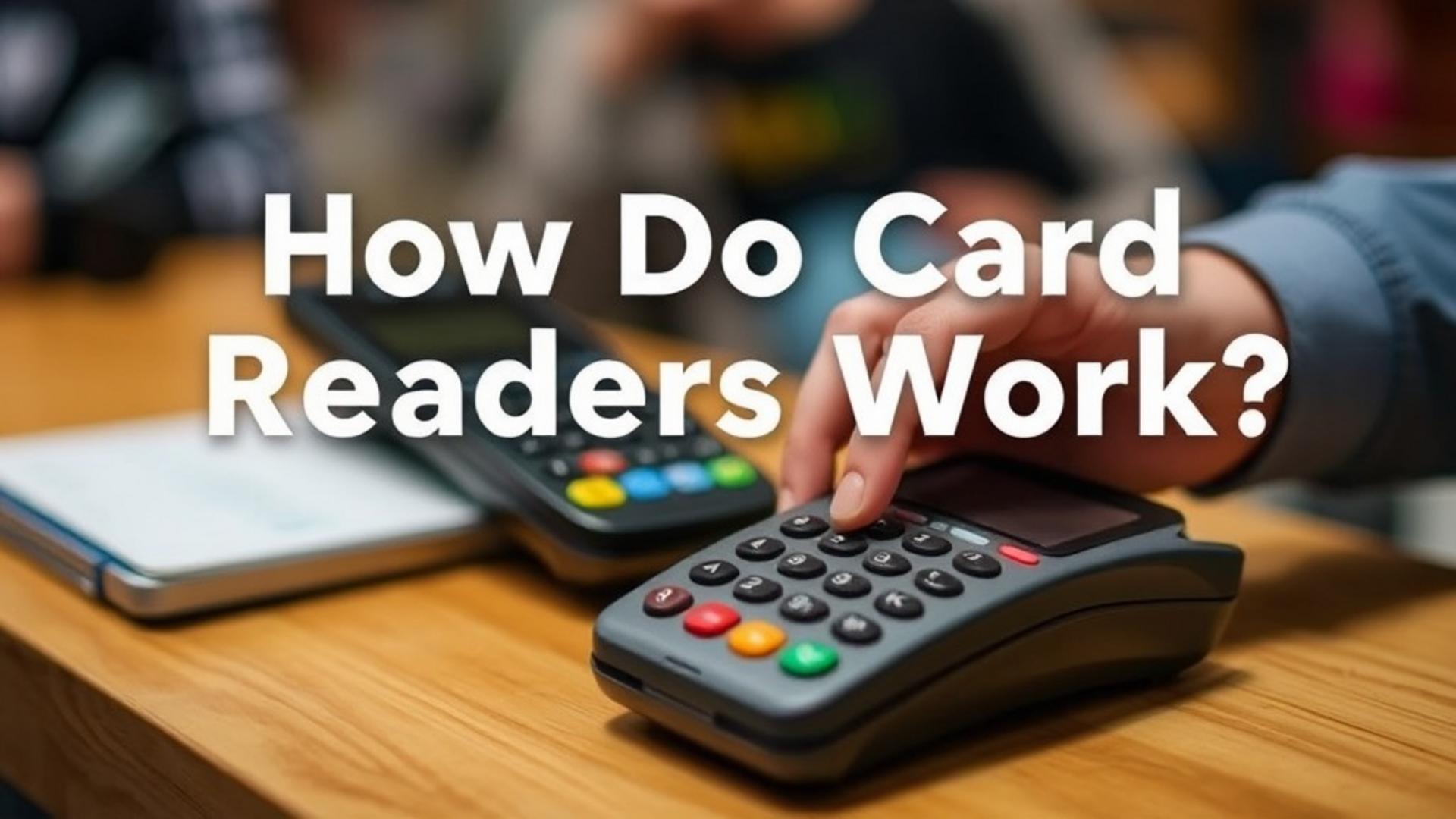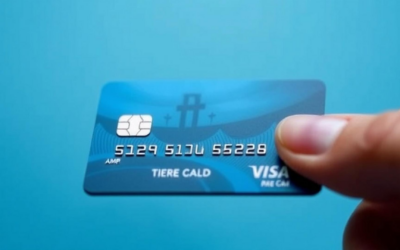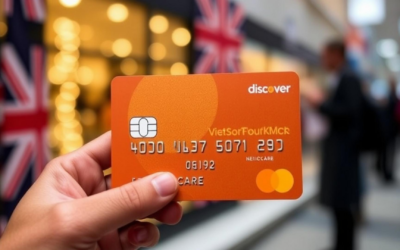How do card readers work: understanding the technology behind modern payments
Card readers are crucial in allowing businesses to accept payments quickly and securely in today’s fast-paced world. With the rise of cashless transactions, card readers have become indispensable for companies of all sizes, from small market stalls to large retail chains. But how do card readers work? This detailed guide will delve into the technology behind these essential devices, their types, and their benefits, helping you better understand how they facilitate transactions.
What is a card reader?
A card reader is a device that allows businesses to accept card payments by reading the information stored on a customer’s credit or debit card. It provides a secure and efficient method for processing payments and converting card information into transactions. These devices are convenient because they make transactions swift and safe, ensuring that businesses can operate smoothly without the hassle of handling cash.
Types of card readers and their functionalities
Each business is unique, and so are its payment needs. That’s why different card readers are designed to fit various business models. Card readers come in three main varieties: mobile, portable, and countertop. Each type serves different purposes depending on the business’s needs and environment.
Mobile card readers
These are designed for businesses on the move. They connect through a SIM card, meaning they don’t require Wi-Fi to process payments. This makes them ideal for delivery drivers, market stalls, and mobile hairdressers, who need the flexibility to accept payments wherever they are. Mobile readers use 3G or 4G connections to process transactions and can be carried around easily due to their lightweight design.
Portable card readers
Perfect for businesses that operate in a fixed location but still need mobility. In restaurants or cafes, portable card readers allow staff to take payments at the table, improving customer service. These readers typically connect via Wi-Fi, providing a reliable way to process transactions without being tethered to one location.
Countertop card readers
These readers are used in businesses where payments are made at a fixed point, such as at a till in retail stores. Countertop readers are typically connected via Ethernet or Wi-Fi and are the most stable option for high-volume, fast-paced environments. Each type of card reader supports multiple payment methods, including contactless payments, chip and PIN, and even mobile wallets, providing businesses with flexibility in how they accept payments.
How do card readers work?
From the tap of a card to the beep of approval, a card reader’s transaction is smooth yet complex. It might seem instantaneous to the customer, but several steps ensure each transaction is completed securely behind the scenes. Here’s a breakdown of how card readers work:
Capturing card information
When a customer makes a payment, the card reader captures their card information using a contactless tap, Chip and PIN, or magnetic stripe. In contactless payments, the reader uses NFC (Near Field Communication) technology, which allows the card to communicate with the reader without physical contact. The card is simply tapped on the reader, and the necessary details (such as the card number and expiration date) are transmitted wirelessly. This method is speedy and often used for small transactions that don’t require PIN verification.
In the case of chip-and-PIN payments, the card is inserted into the reader, and the chip embedded in the card communicates with the reader to transmit data securely. The customer is prompted to enter their PIN (Personal Identification Number) for additional security. This method ensures that only the cardholder can approve the transaction, making it one of the most secure options.
Lastly, for older magnetic stripe transactions, the card is swiped through the reader, which scans the magnetic strip on the back of the card to retrieve the cardholder’s information. Though still in use, this method is less secure than Chip and PIN or contactless, as magnetic strips can be more easily cloned or tampered with.
Data transmission
Once the card details are captured, the card reader must securely transmit this information to the payment processor for approval. This transmission can take place over Wi-Fi, Bluetooth, or GPRS, depending on the type of card reader being used. For example, countertop readers typically use a stable Ethernet or Wi-Fi connection. In contrast, mobile readers may rely on 3G or 4G (GPRS) networks, allowing payments to be processed anywhere, even without access to the internet.
During transmission, the card data is encrypted to ensure that sensitive details, such as the card number and security code, remain secure and cannot be intercepted by malicious parties. This encryption is crucial to maintaining the security and integrity of the payment process.
Verification
Once the payment processor receives the card details, it contacts the issuing bank, which is the bank that issued the customer’s credit or debit card. The bank performs several checks to verify the transaction. First, it ensures the card is valid and has not been reported as lost or stolen. It then checks sufficient funds or available credit to cover the transaction amount. Finally, the bank assesses the transaction for any signs of fraud, such as unusual spending patterns or discrepancies in the information provided.
The bank may decline the transaction if any issues are detected, such as insufficient funds or suspected fraud. Otherwise, it proceeds to approve the payment.
Approval
Once the issuing bank completes its checks, it sends a message back to the payment processor to approve or decline the transaction. If the transaction is approved, the payment processor relays this approval back to the card reader, which informs both the customer and the merchant. The reader typically displays a confirmation message or beeps indicating the successful payment. This approval process happens in real-time, usually taking only a few seconds, ensuring a smooth and efficient transaction.
Completion
After the transaction has been authorised, the payment is processed, and the funds are transferred from the customer’s bank to the merchant’s bank. Although the payment is approved instantly, depending on the bank’s processing time, the funds typically take a few days to settle in the merchant’s account.
The customer is then given a receipt, either printed by the card reader or sent electronically. This marks the final step in the transaction, completing the payment process and ensuring both the customer and the merchant have a payment record.
Security features of card readers
Card readers are designed with multiple layers of protection to ensure every payment is secure. As transactions involve sensitive cardholder data, card readers are built to comply with strict security standards. The key security features include:
- End-to-end encryption: Card readers use encryption to protect the cardholder’s details as they travel from the reader to the bank. This ensures that even if data is intercepted, it cannot be read by anyone other than the intended parties.
- PCI DSS compliance: Card readers must comply with the Payment Card Industry Data Security Standard (PCI DSS), a set of security requirements designed to protect cardholder data. This ensures that businesses using card readers are adhering to the highest security standards.
- Tokenization: Tokenization is a security feature that replaces sensitive card information with a unique identifier or token during the transaction. This token is used to complete the payment, ensuring that the actual card details are not stored or exposed.
- Fraud detection: Many modern card readers come equipped with fraud detection systems that monitor transactions for suspicious activity, helping to prevent fraudulent transactions from being processed.
With these security measures in place, businesses can trust that their card reader transactions are safe and compliant with industry regulations.
The different types of transactions supported
“The modern card reader is more than just a device for credit and debit cards – it supports a variety of payment methods to meet customer preferences.”
Card readers today are designed to handle multiple types of transactions, making them highly versatile. The most common types of transactions supported by card readers include:
- Credit and debit card payments: Whether it’s contactless or Chip and PIN, card readers accept all major credit and debit cards, including Visa, Mastercard, and American Express.
- Mobile wallet payments: Card readers also accept payments made through mobile wallets like Apple Pay, Google Pay, and Samsung Pay. This is especially useful as more customers move towards using their phones or smartwatches to make payments.
- Contactless payments: Contactless payments have become incredibly popular for their speed and convenience. Card readers use NFC (Near Field Communication) technology to allow customers to simply tap their card or device to complete a transaction in seconds.
The ability to support these different types of transactions makes card readers an invaluable tool for businesses looking to cater to the modern, tech-savvy customer.
The benefits of card readers for businesses
“For businesses, card readers are not just a convenience – they are a critical tool that can drive sales and improve efficiency.”
Using card readers has several benefits that help businesses thrive in today’s competitive market. These include:
- Increased sales: Businesses can reach a wider audience by accepting card payments. Many customers prefer to pay with their cards or mobile wallets rather than carrying cash. Card readers enable businesses to capture these sales and offer more payment options.
- Faster transactions: Contactless and mobile wallet payments are quick, often completed in seconds. This reduces customer waiting times, helping businesses serve more customers in less time.
- Mobility: Mobile card readers allow businesses on the move to accept payments anywhere. This flexibility allows companies to expand their operations beyond a single location, whether a pop-up shop, a market stall, or a mobile service.
- Reduced human errors: Card readers can be integrated with POS systems, ensuring that transaction amounts are entered correctly, reducing the likelihood of mistakes that could result in financial losses.
By adopting card readers, businesses can enhance operations, improve customer satisfaction, and streamline payment processes.
Choosing the right card reader for your business
“Choosing the right card reader depends on your business needs – whether you’re on the move or operating from a fixed location.”
When selecting a card reader for your business, there are several factors to consider:
- Business type: A mobile business, such as a food truck or a mobile hairdresser, may benefit from a mobile card reader that can process payments via 3G or 4G. On the other hand, a retail shop with a fixed till may prefer a countertop card reader for stable, high-volume transactions.
- Transaction volume: High-volume businesses, such as retail stores, may opt for a countertop card reader that can handle a constant stream of customers. Businesses with lower transaction volumes, like pop-up shops, may benefit from the flexibility of a portable or mobile reader.
- Mobility: A mobile card reader is the best option if your business frequently operates outside of a fixed location, such as at markets or events. These readers offer the flexibility to accept payments anywhere, even without Wi-Fi.
By carefully considering these factors, businesses can choose a card reader that best suits their operational needs, ensuring smooth and efficient payment processes.
FAQs
What types of card readers are available for businesses?
Three main card reader types are available to suit different business needs. Mobile card readers are ideal for businesses that operate on the go, such as taxis or street vendors, as they connect via 3G or 4G and don’t require Wi-Fi. Portable card readers are commonly used in environments like restaurants and cafes, allowing payments directly at the table via Wi-Fi. Countertop card readers are designed for businesses with fixed locations, such as retail stores, connected to a till via Ethernet or Wi-Fi, providing a stable and reliable option for high-volume transactions.
How do card readers ensure payment security?
Card readers are equipped with several advanced security features to protect sensitive customer data during transactions. One of the key security measures is end-to-end encryption, which ensures that the card details are encrypted from the moment they are captured until the payment is processed. Additionally, all card readers comply with PCI DSS (Payment Card Industry Data Security Standard), establishing strict protocols for securely handling cardholder data. Another important security feature is tokenization, a process that replaces sensitive card data with unique tokens, reducing the risk of fraud and data breaches during payment processing.
Can card readers accept contactless and mobile wallet payments?
Yes, modern card readers are designed to accept a wide range of payment methods, including contactless payments and mobile wallet payments like Apple Pay, Google Pay, and Samsung Pay. Contactless payments work through NFC (Near Field Communication) technology, which allows customers to simply tap their card or mobile device on the reader to complete the transaction. This method is not only fast but also highly secure, as it incorporates encryption and other safety measures to ensure data protection. Mobile wallet payments add an extra layer of security by requiring biometric or password authentication on the customer’s device.
What are the benefits of using card readers for businesses?
Card readers provide numerous benefits for businesses, particularly in improving operational efficiency and customer experience. By accepting card payments, businesses can increase sales by catering to customers who prefer to pay with cards or mobile wallets rather than cash. Additionally, card readers allow for faster transactions, especially with contactless payments, which can be completed in seconds. This reduces waiting times and helps businesses serve more customers in less time. Moreover, card readers can be integrated with point-of-sale (POS) systems, reducing manual input errors and ensuring accurate transaction processing. For businesses on the move, mobile card readers offer mobility and flexibility, allowing them to accept payments anywhere.
How do I choose the right card reader for my business?
Choosing the right card reader depends on the specific needs of your business. For mobile businesses, such as food trucks or delivery services, mobile card readers that operate via 3G or 4G without requiring Wi-Fi are the best option. If you run a cafe, restaurant, or similar establishment, a portable card reader allows you to take payments at the table, enhancing customer convenience. For businesses with fixed locations, such as retail shops, a countertop card reader connected to a till via Ethernet or Wi-Fi ensures fast and reliable payment processing. It’s important to consider factors such as transaction volume, mobility, and integration with existing POS systems when making your choice.







